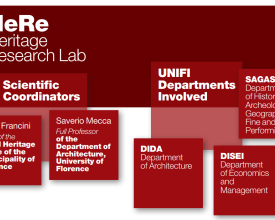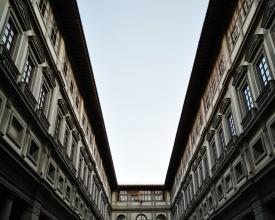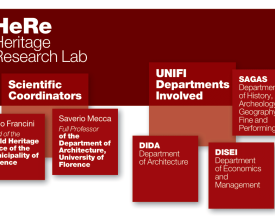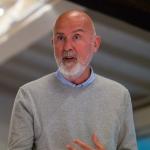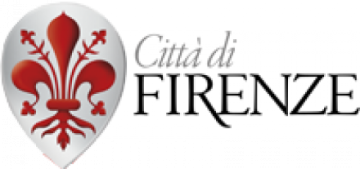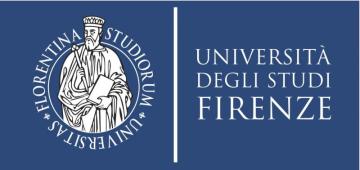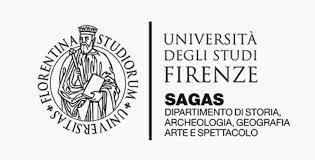
HeRe_Lab: a joint heritage research lab for the management of the World Heritage property of Florence, Italy

HeRe_Lab - Heritage Research Lab is a joint laboratory established in 2015 between the University of Florence (Departments of Architecture; Economics and Management; and History, Archeology, Geography, Fine and Performing Arts) and the Municipality of Florence (‘Florence World Heritage and relations with UNESCO’ Office). Its mission is to contribute to the sustainable development of the city through actions and solutions in harmony with the protection, conservation and enhancement of the Outstanding Universal Value of the World Heritage site ‘Historic Centre of Florence’. Considered a good practice within the World Heritage system both on a national and international level, HeRe_Lab creates and implements initiatives in line with the WH Convention and the Management Plan of the ‘Historic Centre of Florence’ with a multidisciplinary team made up of heritage professionals, architects, urban planners, art historians, economists, geomatics and developers.
Context
Challenges addressed
HeRe_Lab addresses social and economic challenges affecting the management of the World Heritage site ‘Historic Centre of Florence’.
Social challenges
- Lack of an adequate governance system for the management the site
- Identifying and bringing together a structured team of professionals with interdisciplinary backgrounds
- Raising awareness of the significance of the site and its Outstanding Universal Value amongst different target groups (both at a local, national and international levels)
- Lack of site-specific, ad hoc studies and data to inform and guide management actions
Economic challenges
- Fundraising for the implementation and delivery of management and conservation actions, through a vast array of instruments and entities (i.e. calls for applications, funds and tenders; national and international funding; local institutions and foundations)
Location
Process
Summary of the process
This solution presents a structured strategy that has enabled the creation of a multidisciplinary Lab to respond to challenges related to the management of the World Heritage property. The shared model of governance (BB1) is at the core of the Lab and it formalised the joint partnership between the University of Florence and the Municipality of Florence. After the establishment of the partnership, the Lab was created engaging a team of multidisciplinary professionals working across different faculties and municipal departments (BB2). The involvement of emerging heritage professionals (BB3) ensured the implementation of practice-based research methodologies (BB4) that successfully guided management efforts and responded to practical needs.
Finally, the positive outcomes deriving from the interactions of the different building blocks and the activities have resulted in the expansion of the scope of action through additional formalised partnerships between the Lab and other municipalities and regional agencies in charge of managing World Heritage properties in Tuscany. Overall, the good practices applied in this solution have ensured a multiplier effect that can be replicated in other regions of Italy and the rest of the world.
Building Blocks
Establishment of a shared model of governance between University and Municipality
The shared governance established in the HeRe Lab has ensured the creation of systemic synergies between municipal authorities and research institutions, in which the Head of the ‘Florence World Heritage and relations with UNESCO’ Office of the Municipality of Florence and the Dean of the Department of Architecture at the University of Florence act as scientific coordinators. This partnership has created an innovative model in which heritage research and practice are intertwined and the research produced responds to those practical challenges arising from the field.
Enabling factors
The Lab was established through a Memorandum of Understanding between the Department of Architecture of the University of Florence and the Municipality of Florence, which was formalized by the Town Council Deliberation n. 506/2015.
The Management Plan of the World Heritage site, as well as its monitoring, amongst the lab’s main activities, are funded through Law 77/2006 “Special measures for the protection and the fruition of Italian cultural, landscape and natural sites, inscribed on the "World Heritage List", under the protection of UNESCO”.
Lesson learned
The creation of HeRe_Lab - Heritage Research has resulted in the adoption of a multidisciplinary, holistic approach for the management of the World Heritage property of the ‘Historic Centre of Florence’.
The positive outcomes and results have brought together different stakeholders, authorities and institutions, who are supported in the development of heritage strategies and management practices. Therefore, the set of activities carried out by the Lab and its governance model are now attracting new actors, funds and projects and is expanding its scope of action.
Creation of a multidisciplinary team
The success of HeRe Lab lies in its multidisciplinary team, made up of professionals dealing with a wide variety of fields such as World Heritage, urban planning, architecture, art history, development, and economics.. The University of Florence acts as a catalyst for their involvement, through the participation of different faculties in the Lab and in the use of holistic approaches for the creation of sustainable solutions for challenges affecting the historic centre. The Lab has also played an important role in advocating for sustainable strategies in the development of the city, by taking into account urban green spaces, social inclusivity, tangible and intangible heritage protection, economic growth, sustainable tourism, as well as the requalification and enhancement of architectural elements.
Enabling factors
The involvement of professionals with diverse backgrounds is the result of the participation of different faculties of the University of Florence, by means of the Council Deliberation n. 506/2015, which formalised the inter-institutional partnership between the University and the Municipality of Florence. Each faculty contributes through its own pool of professionals, researchers and resources.
The Departments involved are: Architecture; Economics and Management; and History, Archeology, Geography, Fine and Performing Arts.
Lesson learned
The pool of professionals working for and in collaboration with the laboratory has allowed for a more comprehensive understanding of the significance of the site, its attributes and challenges. This has also contributed to the establishment of sustainable solutions aimed at addressing the issues affecting the site considering the wider urban context through the application of methods and research from different disciplines.
Involvement of emerging heritage professionals and researchers
By providing job and research opportunities, the HeRe Lab plays a key role in empowering emerging heritage professionals and researchers in Italy. The Lab supports emerging professionals in working long-term within the World Heritage field, a working area that is still unstructured and underdeveloped in Italy. This makes HeRe Lab a pioneering example in the country.
Emerging professionals and researchers are involved in relevant research projects and they are directly contributing to: drafting of Management Plans of World Heritage properties located in Tuscany; Heritage Impact Assessments; museums-related activities; international conferences and projects, as well as a wide range of activities directly related to heritage research and practice.
Enabling factors
The involvement of emerging heritage professionals, one of the strengths of the model, is made possible by means of the creation of ad-hoc research stipendia (in Italian ‘borse di ricerca’) to financially support researchers in their activities. The application for the research grants is a very competitive process overseen by University professors, who guide the selection process depending on the professional figures required to tackle practical needs arising from the field.
Lesson learned
The Laboratory is acknowledged as a good practice and a leading example of youth development, as the participation of emerging heritage professionals in research directly contributes to the sustainable development by fostering economic growth and encouraging youth empowerment.
Moreover, the inclusion and involvement of young professionals allows for the application of state-of-the-art research methodologies, also following innovative and intergenerational takes on heritage practices.
The Lab acts as a platform that allows emerging professionals to grow and exchange ideas and solutions with senior researchers and heritage professionals.
Practice-oriented heritage research
All the initiatives of HeRe_Lab follow the objectives and targets of the Agenda 2030 for Sustainable Development, as well as the strategic principles of the World Heritage Convention.
The collaboration between researchers and practitioners, as well as their direct involvement in activities and projects, has resulted in a tight synergy between heritage research and practice. Heritage researchers working at the Lab address practical challenges and needs through studies that guide and improve the sustainability of strategies and management systems. Some of the analyses carried out in the framework of the WH property ‘Historic Centre of Florence’ include the identification of Belvedere points and creation of the site’s buffer zone; the publication of the management plan and monitoring strategy; the study on the carrying capacity of the historic centre; the inventory of at-risk buildings that contribute to the OUV of the site; the creation of a protocol for the Heritage Impact Assessment (HIA) of the site; the performance of studies for a comprehensive understanding of the intangible and religious heritage; and the preparatory study of a portal on the urban evolution of the city. These data have become practical and valuable tools employed in everyday heritage management practices.
Enabling factors
The synergy between heritage research and practice is enabled by the very own governance model in place within the Lab, which brings together the University of Florence and the Municipality of Florence in the framework of the Town Council Deliberation n. 506/2015. In addition, the recruitment of a multidisciplinary team of researchers ensures that the wide range of challenges arising from the field can be adequately studied and addressed.
Lesson learned
Practice-based heritage research has proved to be a key tool in responding to site-specific challenges and needs. One of the strengths of the model applied within the Laboratory is the principle that sees it as a platform in which heritage researchers can apply their studies and methodologies in the field to monitor their applicability in real life, and on the other hand heritage practitioners can have the chance to be provided with accurate data and analyses to guide their efforts and design sustainable solutions for practical challenges. Therefore, heritage research has played a prominent role in successfully responding to site-specific needs voiced by practitioners in the field.
Impacts
Social impacts
- Pioneering example of inter-institutional cooperation between academia and the administrative sector for the management of the site
- Involvement of emerging professionals in the World Heritage arena, encouraging youth development in a field that is still not yet structured in Italy
- Establishment of a multi- and interdisciplinary lab gathering professionals with diverse backgrounds, fostering holistic approaches
- Organisation of capacity building activities
- Studies and analyses on the World Heritage site, including its carrying capacity, identification and monitoring of values and attributes, Heritage Impact Assessment, as well as the coordination and the development of the Management Plan
Economic impacts
Economic support and employment opportunities for emerging professionals, and fundraising through a variety of projects and calls for the organisation of projects aimed at the conservation and management of the World Heritage site
Environmental impacts
The lab aims to contribute to the sustainable management and regeneration of green urban areas, with a focus on those connecting the property and its buffer zone, in line with the HUL approach. This is achieved through:
-
an enhanced understanding of the different variety of green areas (such as parks, gardens, historic gardens, cloisters, urban gardens, green itineraries, etc.)
-
the advocacy for their requalification
Beneficiaries
- Citizens of Florence (both residents and city users)
- Stakeholders operating in the historic centre
- National and international community
- Scholars and researchers
- Policy-makers
- Visitors

